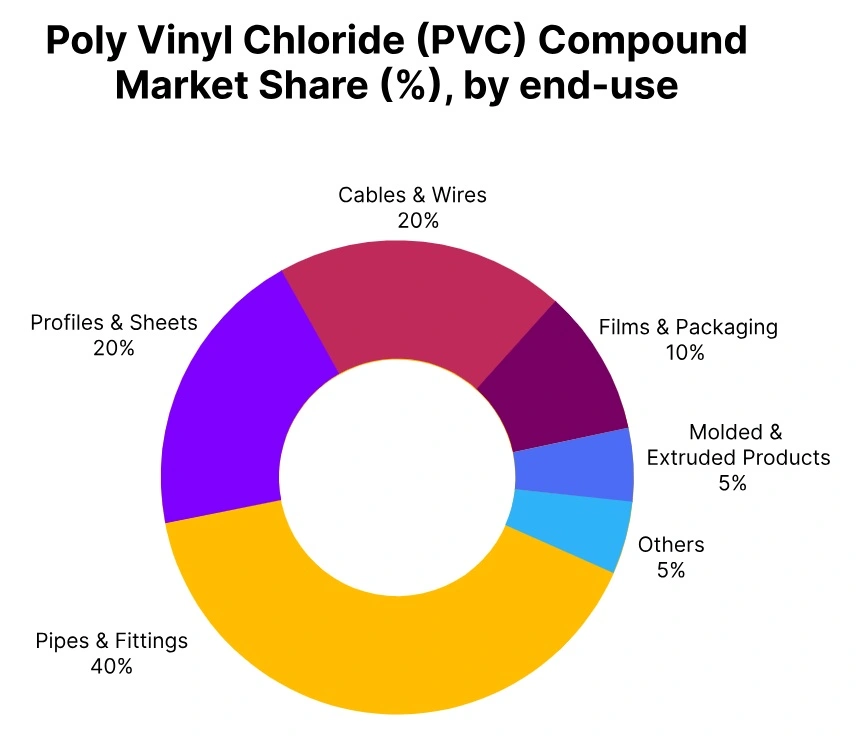Price-Watch’s most active coverage of Polyvinyl Chloride (PVC) Compound price assessment:
- General Purpose House wire Ex-Delhi, India
- Hoses/Tubes CIF Melbourne (Vietnam), Australia
- Hoses/Tubes FOB Haiphong, Vietnam
Polyvinyl Chloride (PVC) Compound Price Trend Q3 2025
In Q3 2025, the global Polyvinyl Chloride (PVC) Compound market has been showing an upward price trend, with prices have been increasing by around 3–5% across key regions. In the APAC region, countries such as Vietnam and India have been witnessing firm price growth, supported by stable demand from construction, wire, and cable applications.
Prices in Vietnam have been strengthening as domestic compounders have been facing higher raw material costs and robust local consumption. In India, market participants have been reporting steady offtake and healthy trading activity, which have been contributing to continuous price improvement.
The Australian market has been experiencing moderate increases, driven by limited supply and seasonal demand from infrastructure projects. Overall, the global PVC Compound market has been remaining firm, with regional variations having been influenced by production costs, raw material availability, and consistent downstream requirements.
Australia
PVC Compound Import prices CIF Melbourne (Vietnam), Australia, Grade Hoses/Tubes.
In Q3 2025, the PVC compound price trend in Australia has been showing a steady upward movement, with prices have been increasing by around 3.3% during the quarter. The market has been observing stable demand from construction and cable manufacturing sectors, which has been supporting this positive momentum.
Rising raw material costs in Vietnam and firm freight rates have been influencing the pricing structure. Despite moderate fluctuations in regional supply, market participants have been maintaining consistent trading activity.
In September 2025, the PVC Compound prices in Australia have witnessed a further 3.8% increase compared to the previous month, having been reflecting ongoing demand strength. Overall, the polyvinyl chloride compound market in Australia has been remaining firm, supported by stable supply conditions and sustained consumption across key industrial applications.
Vietnam
PVC Compound Export prices FOB Haiphong, Vietnam, Grade- Hoses/Tubes.
In Q3 2025, the PVC Compound price trend FOB Haiphong, Vietnam has been showing a firm upward movement, with prices have been ranging between USD 1150–1160/MT, reflecting a 5.0% increase during the quarter.
The market has been observing strong demand from regional buyers, supported by stable production activity and higher feedstock costs. Consistent export activity and firm inquiries from overseas markets have been influencing the pricing sentiment.
In September 2025, the PVC Compound prices in Vietnam have showed a further 1.0% rise compared to the previous month, having been driven by steady offtake and balanced supply conditions. Overall, the PVC Compound market in Vietnam has been remaining supported by sustained demand, favourable trade momentum, and steady raw material availability.
India
PVC Compound Domestically traded prices Ex-Delhi, India, Grade General Purpose House wire.
According to the PriceWatch, in Q3 2025, the PVC compound price trend Ex-Delhi, India has been showing a steady upward movement, with prices have been increasing by around 2.7% during the quarter.
The market has been observing firm domestic demand from construction, cable, and industrial applications, which has been supporting this positive momentum. Rising raw material costs and consistent production activity have been influencing the pricing structure.
In September 2025, the PVC Compound prices in India have recorded a further 2.2% increase compared to the previous month, having been reflecting continued offtake and stable supply conditions. Overall, the PVC compound market in India has been remaining supported by strong domestic demand and balanced production capacity.


